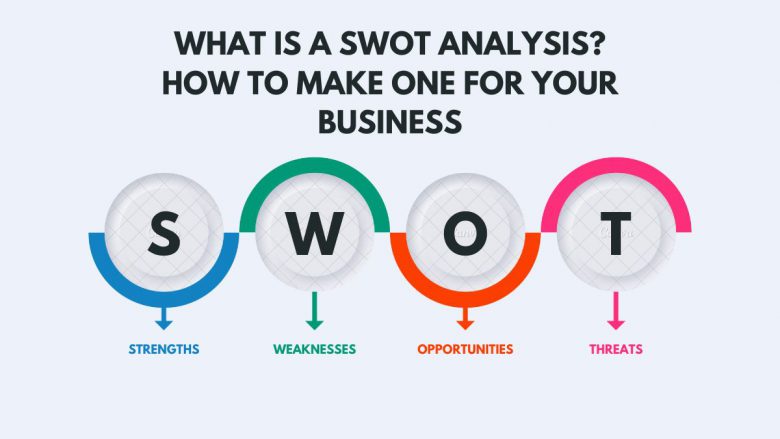
A SWOT analysis is a tool used by businesses to evaluate their strengths, weaknesses, opportunities, and threats. This analysis can help a business to identify areas for improvement and opportunities for growth. In this blog post, we will explore the steps involved in conducting a SWOT analysis for your business.
Step 1: Identify Your Objectives
When it comes to conducting a SWOT analysis, the very first step is to identify your objectives. In other words, you need to determine what you hope to achieve with this analysis. This will help guide the entire process and ensure that you are focusing on the right areas of your business.
Defining your objectives can be as simple as asking yourself a few key questions. For example, what are your short-term and long-term goals? Are there specific areas of your business that you want to improve upon? By having a clear understanding of what you hope to achieve, you can tailor your SWOT analysis accordingly.
Ultimately, identifying your objectives before starting a SWOT analysis is critical for success. Without clear goals in mind, it’s easy to get lost in the process and lose sight of why you’re doing this analysis in the first place.
Step 2: Identify Your Strengths
When it comes to building a successful business, knowing your strengths is critical. It’s essential for identifying opportunities, setting goals, and creating strategies that will help you achieve success. One effective way to identify your strengths is through conducting a SWOT analysis. This involves evaluating your business’s strengths, weaknesses, opportunities, and threats.
Start by listing all the things that your business does well- these are the areas where you excel. These could be anything from providing excellent customer service to having a unique product offering or exceptional employee retention rates. Next, consider how these strengths give you an advantage over your competitors- what sets you apart? Identifying these unique selling points will help you create marketing messages that resonate with customers.
Additionally, look at how these strengths can be leveraged in other areas of your business.
Step 3: Identify Your Weaknesses
Identifying your weaknesses is an essential step toward improving your business. Every business has its areas of vulnerability, and it’s important to recognize them to take corrective action. One effective way to identify these weaknesses is through a SWOT analysis. A SWOT analysis allows you to look at your business from multiple angles and objectively assess where you stand.
When conducting a SWOT analysis, consider both internal and external factors that impact your business. Internal factors might include things like limited resources or outdated technology, while external factors could be things like competitors or changes in the market. Once you’ve identified these areas of weakness, prioritize them based on their potential impact on your business.
Remember that identifying weaknesses isn’t about beating yourself up over what’s not working; it’s about taking proactive steps toward improvement.
Step 4: Identify Your Opportunities
As a business owner, identifying opportunities for growth and success is crucial. One way to do this is by conducting a SWOT analysis, which stands for Strengths, Weaknesses, Opportunities, and Threats. By focusing on the opportunities aspect of the analysis, you can identify areas where your business can expand or improve.
Start by looking at your strengths and how they can be leveraged to create new opportunities. For example, if you have a strong brand reputation in your current market, consider expanding into new markets or offering additional products or services that complement your existing ones. Additionally, examine any weaknesses or gaps in your business model that could be turned into opportunities with some strategic planning.
Another avenue for identifying opportunities is through research and analysis of industry trends and consumer behavior. Keep up-to-date with emerging technologies and changes in consumer preferences to stay ahead of the competition.
Step 5: Identify Your Threats
As you work your way through your SWOT analysis, you’ll eventually come to step 5: identifying threats. This is a critical component of the analysis, as it allows you to prepare for potential challenges that could arise in the future. Threats can come from a variety of sources, including new competitors entering the market, changes in regulations or economic conditions, and even natural disasters.
When identifying threats, it’s important to consider both internal and external factors. Internal threats might include things like inefficiencies in your production processes or a lack of skilled employees. External threats are often outside of your control but still need to be accounted for. For example, if there’s a sudden shift in consumer preferences that don’t align with your product offerings, this could pose a major threat to your business.
Step 6: Analyze the Results
After going through the process of completing your SWOT analysis, it’s time to take a step back and analyze the results. The purpose of this step is to identify ways in which you can capitalize on your strengths and make improvements in areas that need attention. It’s important to note that while strengths are essential for success, so too are weaknesses. Understanding both will allow you to create a plan that leverages your strengths while addressing any potential challenges.
The first thing you should do when analyzing your SWOT analysis results is to identify any trends or patterns that emerge. This could involve looking at which opportunities align with your strengths, as well as which threats may require extra attention. Additionally, consider how you can leverage your unique selling proposition (USP) based on these findings.
Step 7: Create an Action Plan
After conducting a comprehensive SWOT analysis, it’s time to put your findings into action. Creating an action plan is crucial to ensure that you’re making the most out of your strengths and opportunities while addressing your weaknesses and threats. The key goal of the action plan is to outline specific steps that you need to take to achieve your objectives.
The first step in creating an effective action plan is to prioritize your goals. Decide which areas need the most attention and focus on those first. Next, break down each goal into smaller, more manageable steps. This will help you track progress and measure success along the way. Be sure to assign specific deadlines for each task so that you stay on track with execution.
Once you have identified the necessary actions, determine who will be responsible for completing them.
Conclusion
A SWOT analysis can be a valuable tool for any business looking to evaluate its position in the market. By identifying your strengths, weaknesses, opportunities, and threats, you can create an action plan to achieve your objectives and ensure long-term success. By following these steps, you can conduct a thorough SWOT analysis for your business and take the necessary steps to improve and grow.


